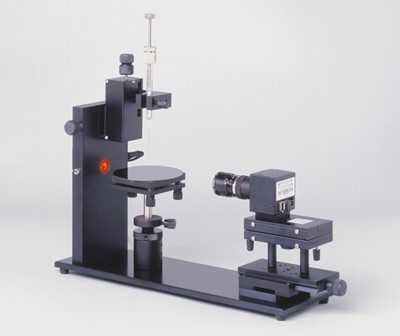Contact angle measurement is a technique used to determine the wetting behavior of a liquid on a solid surface. It is an important tool in various fields such as materials science, surface chemistry, and engineering. The history of contact angle measurement dates back to the 18th century when researchers first began to investigate the properties of liquids on solid surfaces. In this blog post, we will take a closer look at the history of contact angle measurement and how it has evolved.
The earliest known reference to contact angle measurement was made by Thomas Young in 1805. He observed that the contact angle of a droplet of liquid on a solid surface is related to the interfacial tensions between the liquid, solid, and air. However, it was not until the 20th century that more precise methods for measuring contact angles were developed.
One of the first techniques for contact angle measurement was the capillary rise method. This involved placing a capillary tube into a liquid and measuring the height of the liquid rise in the tube. By comparing the height of the liquid in the capillary to that of a reference liquid, the contact angle could be determined. This method was limited in its accuracy due to variations in the size of the capillary tube and the difficulty in measuring small differences in liquid heights.
Another technique used early on was the goniometer. Goniometer comes from the Greek words gonia which means angle and metron for measure. Goniometers have been used in many applications but for contact angle measurements the first commercial measuring tool was developed by Zisman in the 1920s. This involved placing a droplet of liquid onto a solid surface and measuring the contact angle using a microscope equipped with a goniometer. The goniometer allowed for accurate measurements of the angle of a drop placed on the sample surface. This method became known as the sessile drop method and is still widely used today.
Biolin Scientific’s contact angle measurement knowledge goes back to a company called KSV Instruments. KSV Instruments was a Finnish company founded in the early ’90s. Its optical tensiometer line CAM was launched soon after the company was established. The first instrument was CAM 100 which was a manual contact angle measurement instrument.  Soon after CAM 200 was launched providing much more automation as well as a state-of-the-art camera for drop visualization. Some of the CAM instruments are still in use today.
Soon after CAM 200 was launched providing much more automation as well as a state-of-the-art camera for drop visualization. Some of the CAM instruments are still in use today.
The next step for KSV Instruments was the launch of a Theta line in 2008. Theta became the flagship of the company while Theta lite was introduced as an entry-level system. Attension as a brand for all optical and force tensiometers was introduced in 2009 and the OneAttension software about a year later in 2010. OneAttension has remained the best-in-class software since its launch thanks to continuous development efforts.
Biolin Scientific acquired KSV Instruments in 2009. Under Biolin Scientific Attension brand continued to develop. Developing features that customers want with superior usability became the driving force for the brand. In 2013, the 3D Topography module was introduced to the market to meet the requirements of contact angle measurements on real surfaces. The high-pressure chamber for Theta was launched in 2015 and aimed mainly at oil & gas markets. Its unique features that increased the usability of the module were quickly accepted.
A great milestone in terms of product development was achieved in 2019 when Theta Flex was introduced replacing the Theta. The slick design of the instrument drew immediate attention and the instrument was awarded the Best-of-the-best title in Reddot design competition in 2020.
The Theta product line was further strengthened with the launch of Theta Flow in 2021. Theta Flow continues to push the boundaries of the optical tensiometer providing the best user experience in the optical tensiometer market.
Over the years, many modifications and improvements have been made to the sessile drop method, including the use of automated contact angle measurement systems and the development of new mathematical models to analyze the data.
Today, contact angle measurement is an important tool in many fields of research, including surface science, biomaterials, and nanotechnology. It is used to study the wettability of surfaces, the adhesion of coatings and paints, and the behavior of liquids in microfluidic devices.
If you would like to learn more about contact angle measurement theory, please download the contact angle white paper through the link below.
Discover why contact angle is essential for adhesion, coatings, and quality control. Learn how surface wettability impacts product performance.
Discover why PFAS-free coatings are needed, the challenges they present, and key strategies for developing high-performance alternatives.
At the heart of droplet formation are two key molecular forces: cohesion and adhesion.
Contact angle measurements provide a golden standard for evaluation of surface properties for quality control.
Contact angle is the angle a droplet forms in contact with a solid surface. Thermodynamically, it is a balance between cohesive and adhesive forces.
This blog post discusses the importance of adhesion in the lithography process and how to predict adhesion with contact angle measurements.
HMDS is used to render the surface of silicon more hydrophobic and thus to match better with the chemistry of the photoresist.
This blog post explains the concept of RCA cleaning and it's relation to contact angle.
Contact angle measurements can be used to evaluate the cleanliness of silicon wafers.
